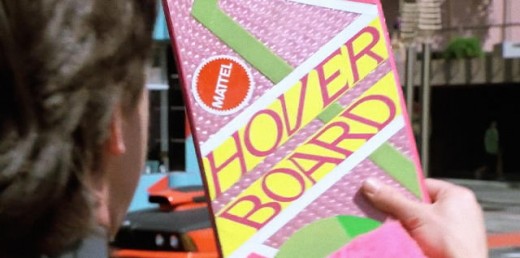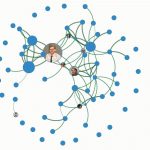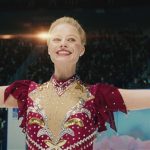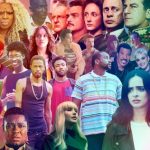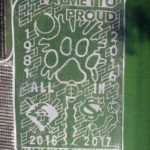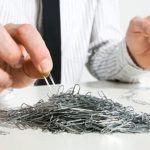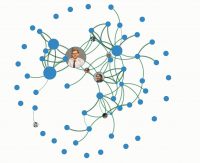How John Bell Designed the future, And The Hoverboard
For the first time, artist John Bell shares unheard stories and unseen ideas of the hoverboard from again to the longer term 2.
June 22, 2015
“the one factor they stated to me was, we go 30 years into the long run, and there’s something known as hoverboard. Put together a package. We’ll get along side Bob Z and Bob Gale and see what you are making.”
This was the terse brief dictated to John Bell in 1986, the younger concept dressmaker and hot rod enthusiast who used to be working on the famed special effects workshop ILM (Industrial mild and Magic). most effective a year on the job, he’d already created storyboards and ideas for superstar Trek four, Innerspace, and Cocoon 2. Now, he and his colleague Dave Carson have been being surpassed a tabula rasa on which to color the year 2015 and the sequel to the film back to the future. In an interview with Co.Design, Bell gave us the exclusive story on growing this world, while sharing some by no means-before-considered thought sketches of the hoverboard.
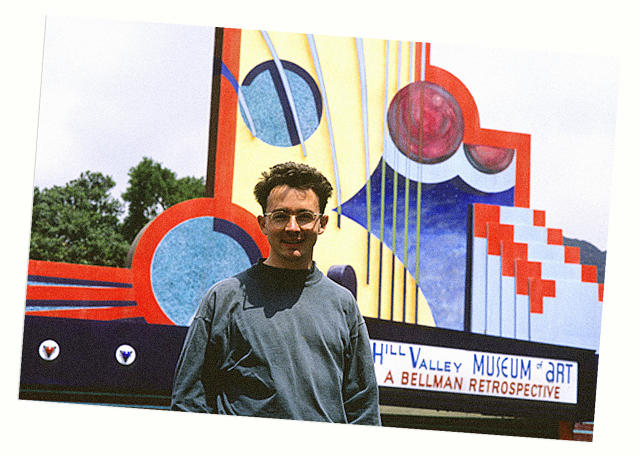
BTTF, you can remember, wasn’t just the best possible grossing film of 1985; it owned the Nineteen Eighties cultural consciousness. “Doc.” “nice Scott.” “88mph.” “Flux capacitor.” “that is heavy.” This used to be the lingua franca of the era.
Bell had just finished ideas for the Ron Howard myth movie Willow when he obtained the BTTF2 transient. He sketched 30 images—ranging from hoverboards, to automobiles, to Hill Valley, to costumes. however then Bob Z—also known as Robert Zemeckis—went to film Who Framed Roger Rabbit. Two years passed before the challenge was once picked up again.
Rick Carter, the production designer on BTTF2 (who’d later work on Jurassic Park, Avatar, and star Wars: The pressure Awakens), preferred what he noticed in Bell’s work, and negotiated that he come to L.A. to work on the movie “I was put on loan,” Bell tells me. “It used to be only purported to be two to a few weeks, and it ended up being four months. It was the primary time I labored in an L.A. artwork division.”
From then on, as Tim Flattery, a car fashion designer on BTTF2 places it, Bell “did the whole thing,” serving as Carter’s right-hand man, working closely with costume fashion designer Joanna Johnston, and placing “his stamp in all places the film” while coordinating the backlot design of the long run Hill Valley.
creating a colourful, bright Future
A easy but necessary line from BTTF2’s script read, “Hill Valley has modified for the simpler.” It wasn’t some sad, dystopian situation, such as you see in The hunger games or The Matrix. It used to be a a uncommon future that the target audience would in truth sit up for dwelling.
Bell says he used to be a pop culture Anglophile then, obsessive about the experimental graphic design popping out of Europe. i-D journal was in particular inspiring. on the time, it at all times featured an individual winking on the duvet—and indeed, if you look at covers from the era, which you could almost see BTTF2 looking again.

“The format of these magazines were all the time so colorful, and once in a while the juxtaposition of colours was bold and surprising,” Bell says. “I started throwing that into the artwork I was once doing.”
He additionally took recommendation from famous futurist Syd Mead that he’d heard in an interview. Mead claimed that whereas designing Blade Runner, he’d seemed back several a long time to earlier traits, because design was cyclical in nature. Bell did the same factor. He went back to 1955—identical to they do in back to the longer term, to drag visual cues. have a look at the publish place of work containers, side road lamps, and taxis of BTTF2, and also you’ll see pointers of 1955 throughout.

“when you put one thing familiar into the design, the target market can hang onto it better,” Bell says. “If it’s a color palette, or a form, the audience says, ‘I’ve seen that ahead of; it jogs my memory of something.’ occasionally in films something is totally summary and eliminates folks from the story.”
So many sci-fi movies paint the longer term in spires of black goop. In BTTF2, what’s previous become new, and what’s new used to be each sudden and familiar.
developing Griff, Bell’s Alter Ego
occasionally, Bell’s inspirations have been extra private in nature. actually, for the personality Griff—that’s Biff’s doppelgänger grandson—Bell pulled one of the most iconic components from his personal lookbook.
“at the time, I used to be wearing a pair of footwear i bought on Melrose or something, and they virtually had a more or less rhino type nostril to them. And the costume fashion designer, Joanna, said, ‘these are nice sneakers! We should do one thing like these for Griff,'” Bell says. “So I took pretty much the shoe I used to be carrying, with a jagged sole, and match them with an aluminum tip so it appeared like a spike was on it.”
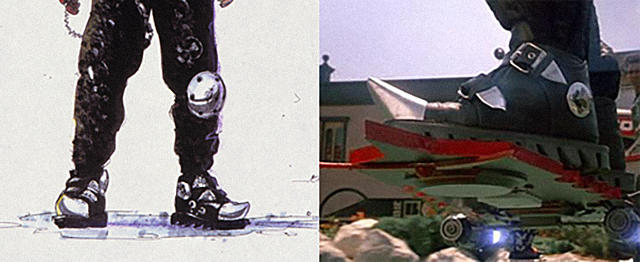
Griff’s automobile, too, was once modeled after that of Bell. you may also not take into account that, but Griff had a matte black BMW with a brilliant orange photos. “I’d painted my automotive matte black,” Bell admits. “nobody had matte black automobiles however previous sizzling rodders…after all, my automotive was a Ford Fiesta.”
building The Hoverboard
Of the entire futuristic parts from BTTF2—with the conceivable exception of Tinker Hatfield’s self-lacing Nikes—it’s the hoverboard that grabbed the best prepubescent cultural mindshare. whereas the hoverboard effect was created generally by way of artful slicing and actors dangling with the aid of wire in midair, many believed that it wasn’t a distinct effect, however an precise, working expertise. (Robert Zemeckis, a serial media prankster, only fueled the rumors through claiming they were actual however deemed too dangerous through oldsters to ever go on sale.) And even after journalists—or possibly simply people grounded in sound logical thinking—debunked the existence of the hoverboard, rumors started that inventor Dean Kamen used to be developing a hoverboard of his personal. (This secret undertaking ended up being a Segway.)
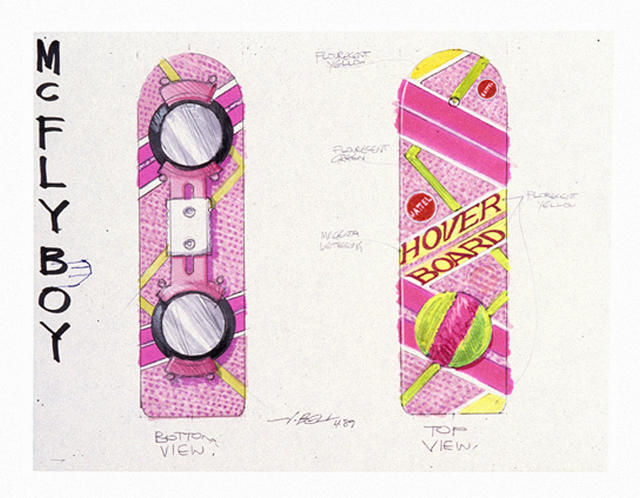
The hoverboard of the movie is a Mattel-branded toy of the future, designed for ladies and thereby coated in Barbie-esque sizzling purple. however Bell’s original hoverboard sketches seemed so much totally different, and for years he worked on a series of hoverboards for Marty and Griff’s gang that were much less magical, and more mechanical.
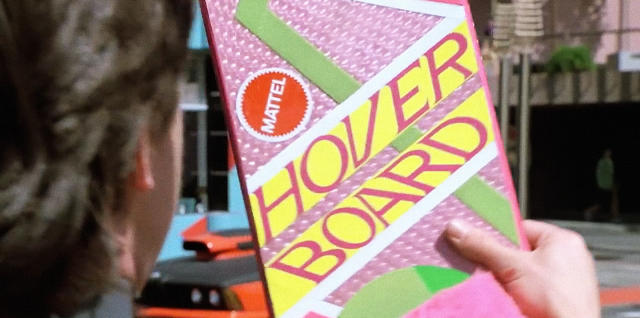
In Bell’s very first hoverboard sketch, Marty roughly surfs on a miniature hovercraft, full with lights and air vents. It has Swatch and Zubaz patterning that may be later misplaced to the pink aesthetics of a Mattel sponsorship. The word “Rodis” used to be an homage to Nilo Rodis Jamero—the famed ILM clothier who at the start hired Bell.
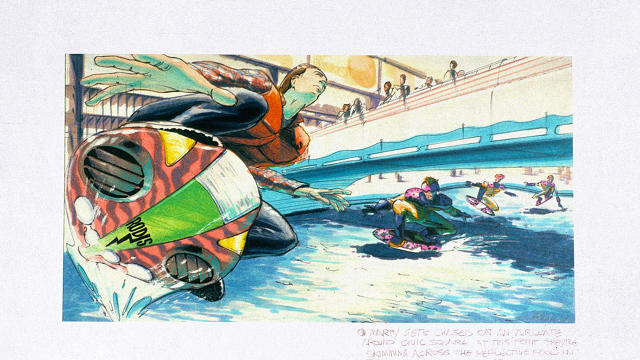
in the sketches that Bell shared, I see jet engines, pipes, and metallic chunks that would possibly were pulled off a mid-century automobile, radio, or vacuum cleaner. This heftier aesthetic was a reference to 1955 know-how. Bell was additionally inspired by using experiments with physical fashions in ILM’s edition store, the place he and colleagues pieced collectively quite a lot of design components that might make an audience consider this stuff may really fly.
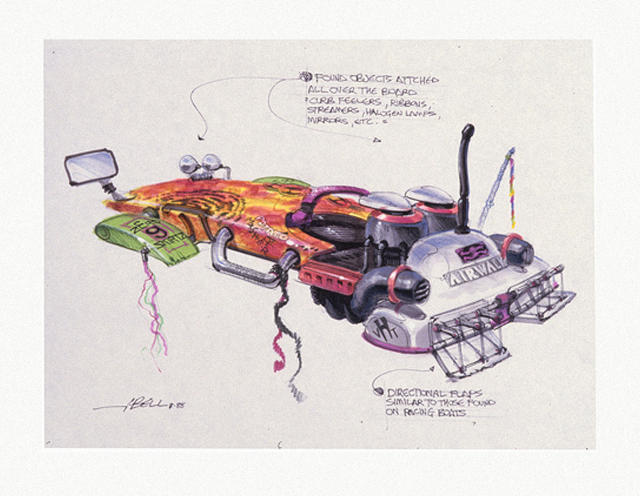
you can also see that every member of Griff’s gang in reality had his own custom hoverboard, exploring a Menudo or energy Rangers member-by-member colour scheme. “I was once playing round with ideas that one of the vital gang individuals have been definitely into one shade,” Bell says. “One man can be totally blue. He’d have a blue hat. elements of his face would be blue. He’d have a blue hoverboard.”

Bell’s unique concepts are a peek into an alternate BTTF universe, the place folks modded their very own hoverboards like sizzling rods. “They stored getting greater and bigger,” Bell says. “the biggest one used to be more like a wakeboard, or a snowboard, but wider.”
in the end, Robert Zemeckis reviewed the work and made up our minds the hoverboards wanted to be pared down for each the sake of the story and budgetary reasons (a dozen hoverboards of each and every design would possibly have to be constructed for the stuntmen to use all the way through shooting). His directive? Make it as simple as a regular skateboard, with out the wheels. A reasonably magical, levitating hoverboard was the natural response.
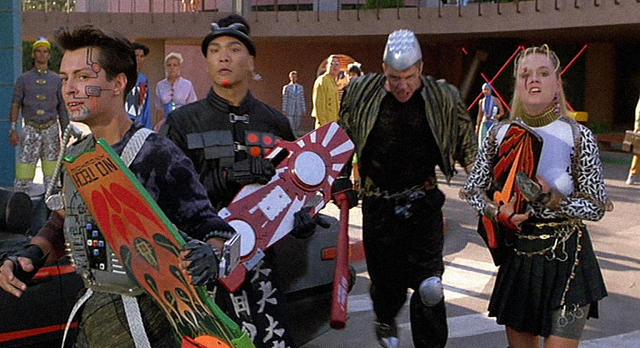
but in another occasion of Griff mirroring Bell’s personal tastes, Griff’s “pit bull” board nonetheless got to keep its jet engines.
John Bell went on to work on BTTF3, The Rocketeer, and crew up with production design Rick Carter once more in Jurassic Park. He burned out on L.A., and moved to Oregon to work at Nike for seven years—having met Nike CEO Mark Parker on the set of BTTF2—sooner than moving again to L.A. and returning to movie. Bell at the moment works at ILM and is every bit as good as your eight-12 months-previous self would hope.
(182)

